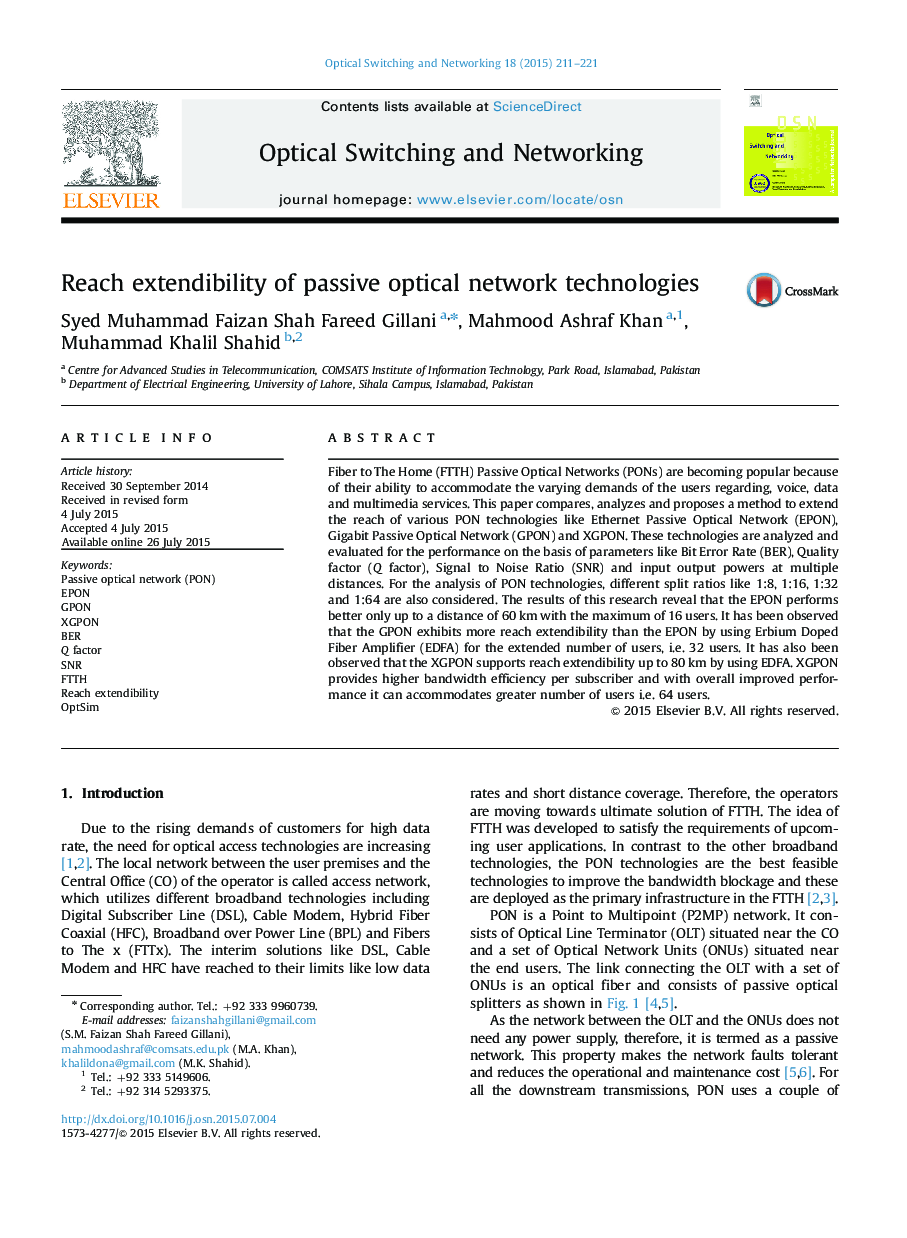| Article ID | Journal | Published Year | Pages | File Type |
|---|---|---|---|---|
| 464814 | Optical Switching and Networking | 2015 | 11 Pages |
•The comparison of different Passive Optical Network (PON) technologies.•Ethernet PON (EPON), Gigabit PON (GPON) and XGPON are being considered.•The parameters of evaluation are BER, Q factor, SNR, Input and Output power.•Reach extendibility and the performance of EPON, GPON and XGPON have been analyzed.
Fiber to The Home (FTTH) Passive Optical Networks (PONs) are becoming popular because of their ability to accommodate the varying demands of the users regarding, voice, data and multimedia services. This paper compares, analyzes and proposes a method to extend the reach of various PON technologies like Ethernet Passive Optical Network (EPON), Gigabit Passive Optical Network (GPON) and XGPON. These technologies are analyzed and evaluated for the performance on the basis of parameters like Bit Error Rate (BER), Quality factor (Q factor), Signal to Noise Ratio (SNR) and input output powers at multiple distances. For the analysis of PON technologies, different split ratios like 1:8, 1:16, 1:32 and 1:64 are also considered. The results of this research reveal that the EPON performs better only up to a distance of 60 km with the maximum of 16 users. It has been observed that the GPON exhibits more reach extendibility than the EPON by using Erbium Doped Fiber Amplifier (EDFA) for the extended number of users, i.e. 32 users. It has also been observed that the XGPON supports reach extendibility up to 80 km by using EDFA. XGPON provides higher bandwidth efficiency per subscriber and with overall improved performance it can accommodates greater number of users i.e. 64 users.
